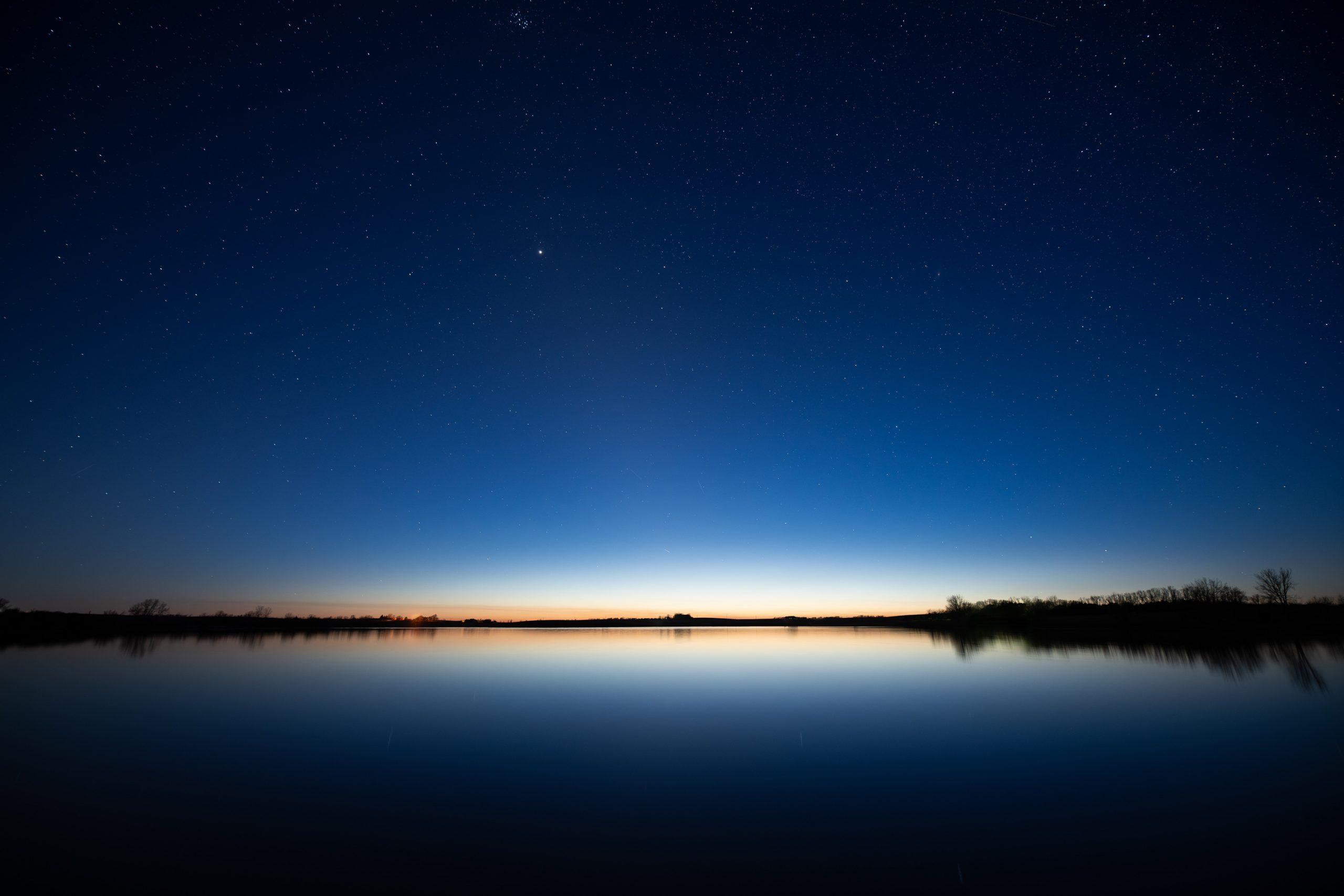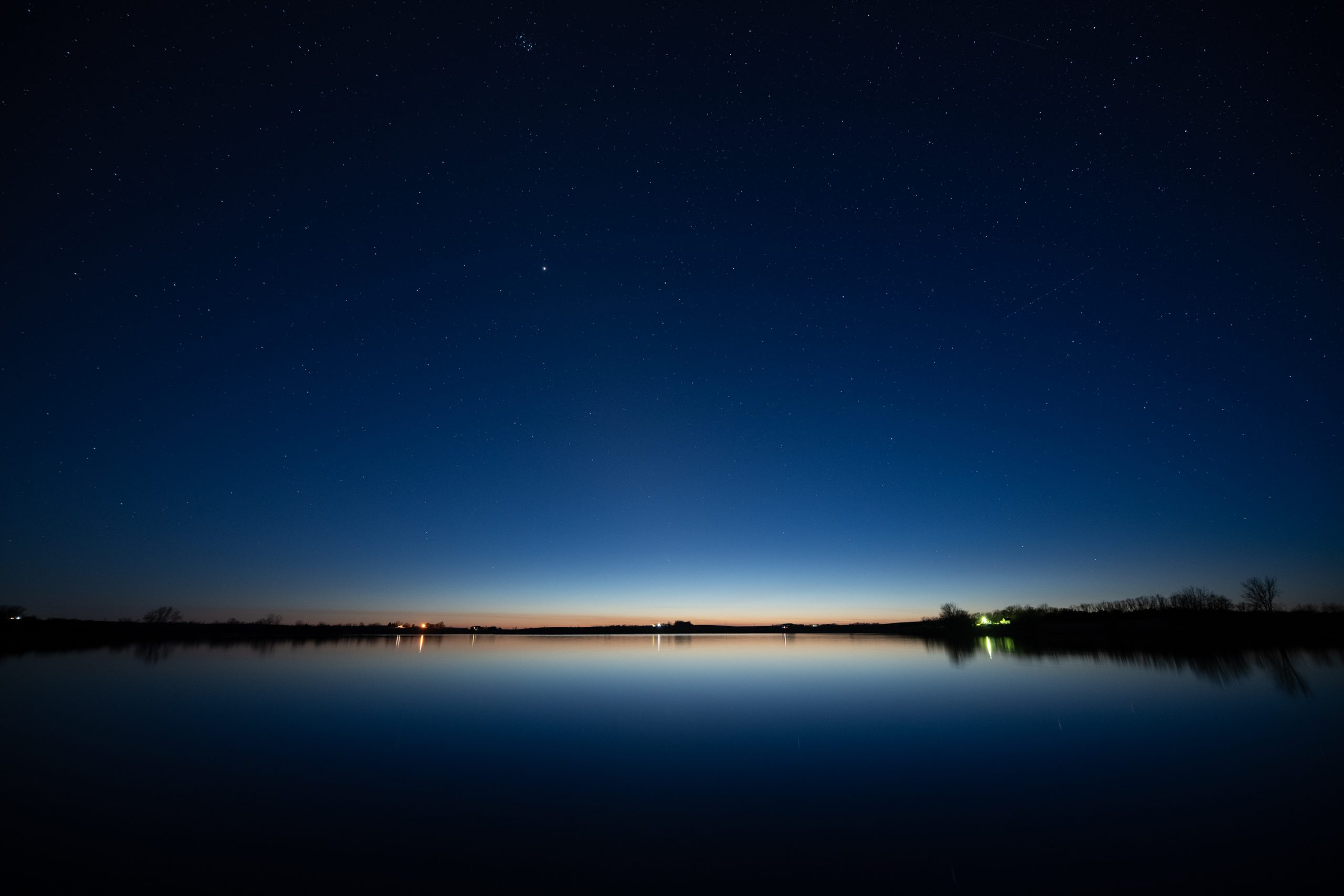I recently had the idea to start a blog series called “A Closer Look” which highlights individual photos and the whole process from taking the photo to publishing it. These highlights can include anything like camera configuration, photo setup, or even just a story behind the image. What better photo to start this series off than my new favorite, “Lost in Twilight?”
Not all my photos get interesting names like “Lost in Twilight.” In fact, most of them get generic names just enough to describe the photo itself because, let’s face it, giving unique and creative names to photos can be a challenge. But when I take a photo that I get really excited about, like this one, I try to give it a more meaningful name though I’m not always successful.
The name “Lost in Twilight” does not originate from any kind of teen vampire story. Instead, the name comes from the location the photograph was taken (Lost Lake, SD) and the fact that the main light source of the photo is from twilight (which is simply an amazing time to take photographs).
Twilight is when the sun is below the horizon (right before sunrise or right after sunset) and light is scattering in the upper atmosphere. It produces a wonderful soft light which changes quickly as the sun gets further away.
Configuration
It was very dark that evening. This particular photo was taken toward the end of twilight when there was very little light left from the Sun and I needed a flashlight to see anything. Additionally, there was no moonlight due to the new moon.
Fortunately, the plan was to take photos at night so I had my important equipment with me to account for the low light conditions. The specific equipment I needed for a shot like this was my tripod and my intervalometer. Once everything was set up, it was time to start clicking.
Equipment & Setup
| Camera | Nikon D850 |
| Lens | Sigma 14-24mm f/2.8 DG HSM Art |
| Camera Setup | Mounted on Tripod |
| Remote Trigger | Intervalometer, wired |
| Location | Lost Lake, SD. East side of lake facing West |
| Date | March 9, 2024 |
| Time | Late evening, between 9:00 and 10:00. |
One exciting point about taking this image is it was my first time taking out my new Sigma 14-24 Art Lens.
Camera Settings
| Exposure Time | 12 Seconds |
| ISO | 800 |
| F-Stop | f/2.8 |
| Focal Length | 14mm |
| Focal Distance | Infinity |
Image Editing
All editing for this image was done in Lightroom.
The first step for editing this photo (other than exposure and white balance) was cleaning up the unwanted elements. There were several streaks from planes in the sky as and lights from car and houses in the distance. These were removed using a combination of the Content-Aware and Healing tools.
Noise Reduction
Once the lights and plane streaks were removed, a close inspection of the detail showed a decent amount camera noise. This noise would have come from a slightly increased ISO at 800, but more so from the longer exposure at 12 seconds.


The noise was cleaned up simply using the Noise Reduction feature in Lightroom with a value of 40.

Trouble in the Stars
One important thing to do before ordering expensive enlargements of any photo is to order a test print. This photo was a prime example of that. When viewing on the screen, there were no issues seeing the stars in the sky. My first 8×12 test print was not so lucky and the stars were hardly visible. Jupiter, at least, was easily visible. I went through a couple iterations to resolve this issue. The first step was to create a mask of just the sky where the stars are most prominent and increase the contrast to pull out the stars some. The increased contrast did help a bit but not a significant amount. From there, my next attempt was using the same mask to increase the Texture value which really brought out the stars. Sadly, the increased texture made it look a bit overdone on the screen so ultimately decided to leave it off and just stick with the contrast adjustments.
Before & After
Conclusion
“Lost in Twilight” easily became one of my favorite photos. The soft glow of the remaining sunlight mixed with the stars in the sky blended together for a fantastic image.
Thanks for reading my first “A Closer Look” post on “Lost in Twilight!” I hope you enjoyed learning more about the photo and I look forward to writing my next one.



